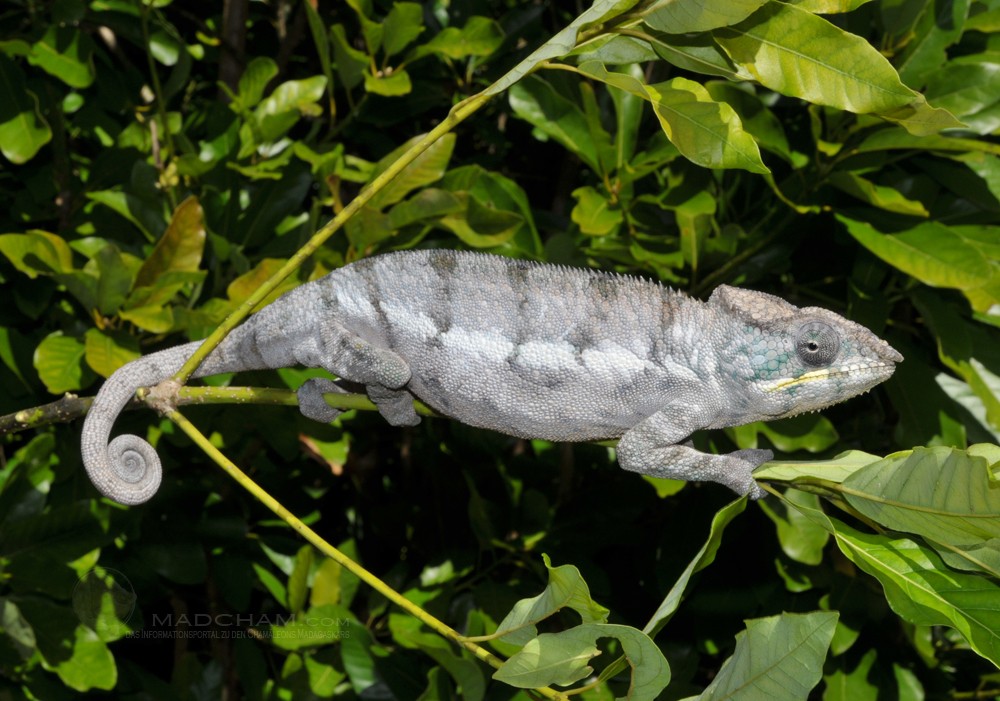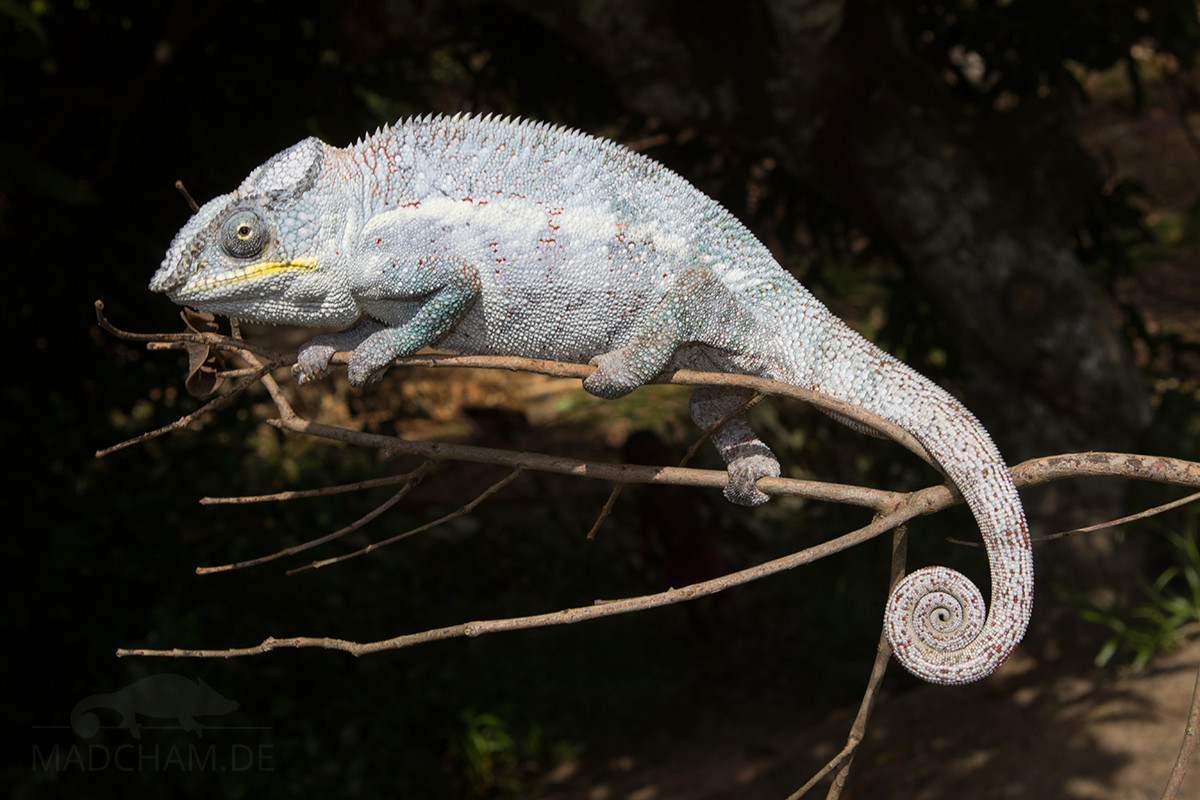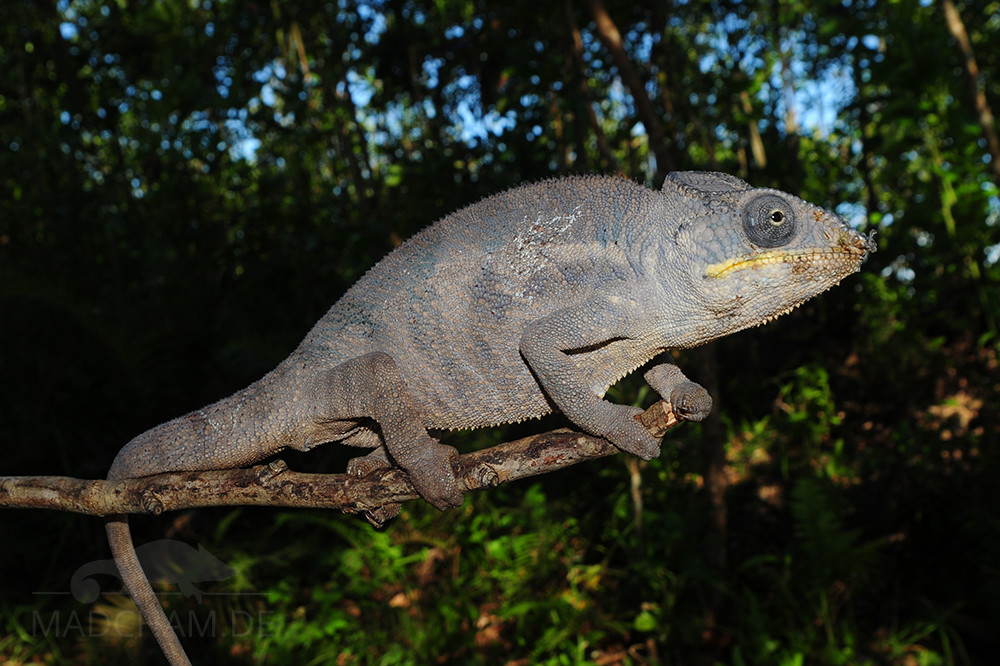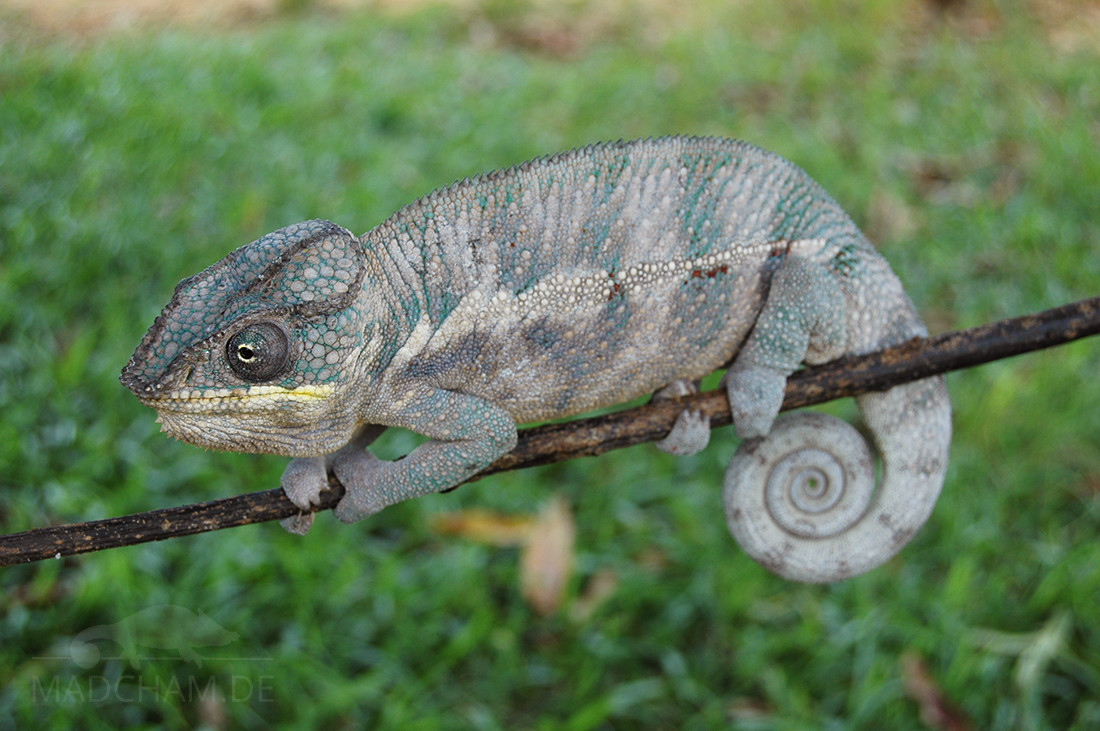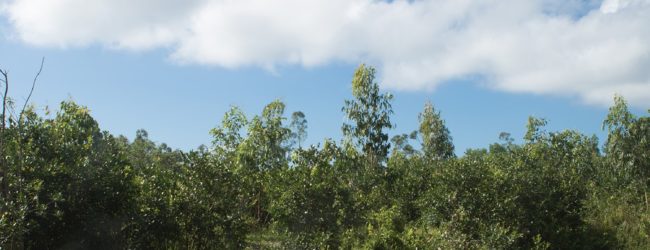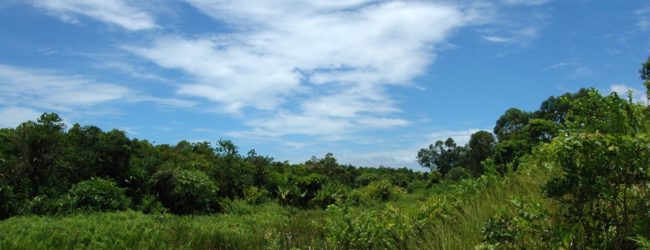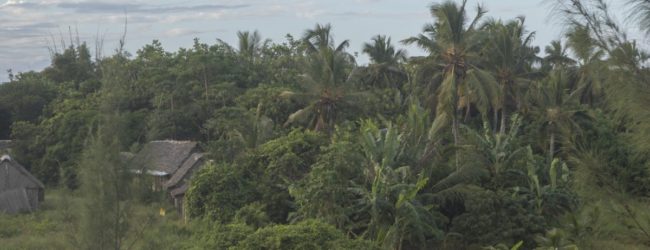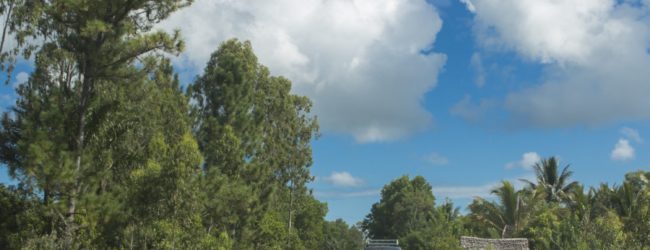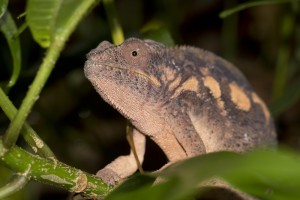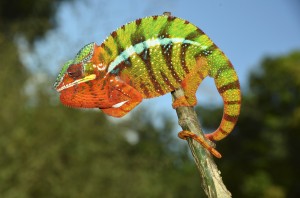Distribution of the local form Mahavelona:
Mahavelona (former French Foulpointe) is located on Madagascar’s east coast in region Toamasina. With approximately 20.000 inhabitants, it is a larger city that is directly at the Indian Ocean and thus serves as a local recreation area for the people of Toamasina (Tamatave). Besides the beach, there is much secondary vegetation, some rice fields, and clove plantations, but the city mainly lives on fishery and native tourism. From Toamasina, you can reach Mahavelona via RN5 within two to four hours (about 50 km). The road has become remarkably worse in the last two years. In the north, this local form is bounded by the river Onibe, which flows into the Indian Ocean. To the south, a smaller river delimits the local form of Toamasina (Tamatave).
Appearance of the local form:
Males here are grey-blueish to almost white with slight, grey-blue stripes. When stressed, these specimen can become almost white with deeply blue stripes.
Weight table
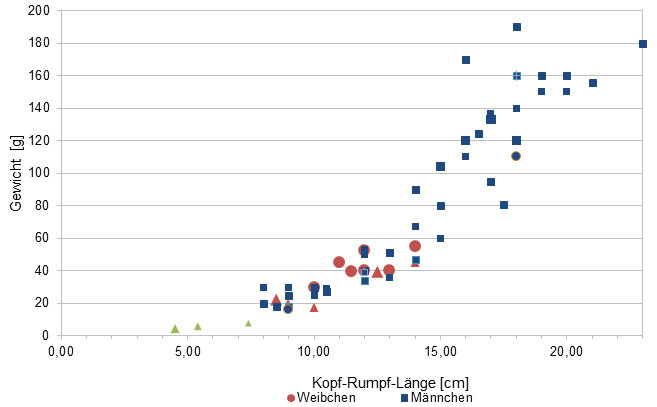
Gewicht = weight in grams, Kopf-Rumpf-Länge = snout-vent-length in cm, Weibchen = females, Männchen = males
Since 2015, we have been measuring the weights of chameleons found by us in Madagascar, as far as the animals (and our scales) participate. In the long term, we aim to obtain an average weight in relation to snout-vent-length (measured from the tip of the nose to the cloaca) for each species from as many measurements as possible. It is important to know that all weights were measured towards the end of the rainy season (= best food supply), so these should be maximum weights on Madagascar. Triangular symbols in females mean not pregnant, round symbols mean pregnant. In Furcifer pardalis, contrary to our original assumption, it has so far turned out that there are no serious differences in the ratio of SVL to weight between the individual local forms.
| Jan | Feb | Mar | Apr | May | Jun | Jul | Aug | Sep | Oct | Nov | Dec | |
| Average temperature | 26 | 27 | 26 | 26 | 24 | 22 | 22 | 22 | 22 | 24 | 25 | 26 |
| Minimum temperature | 23 | 23 | 23 | 22 | 20 | 18 | 18 | 18 | 18 | 19 | 21 | 22 |
| Maximum temperature | 30 | 30 | 30 | 30 | 28 | 27 | 26 | 26 | 27 | 28 | 29 | 30 |
| Rain days | 20 | 20 | 20 | 15 | 15 | 14 | 17 | 16 | 12 | 13 | 15 | 20 |
We have collected the data given above over several years with thermometers and hygrometers at the finding places of the chameleons. "Average temperature" means that values of a whole month have been calculated to one average value per month. For example all measured minimum temperature values of February have been calculated to one average minimum temperature for February. In plain language, this means single peak values of a day may be a little higher or lower than the average minimum and maximum temperatures. It is possible that a location has an average maximum temperature of 29°C, but one day during that month it had 33°C or even 35°C there.
An example of a daily pattern of temperatures in Mahavelona during the rainy season can be found below. It was recorded with data loggers in 2023.
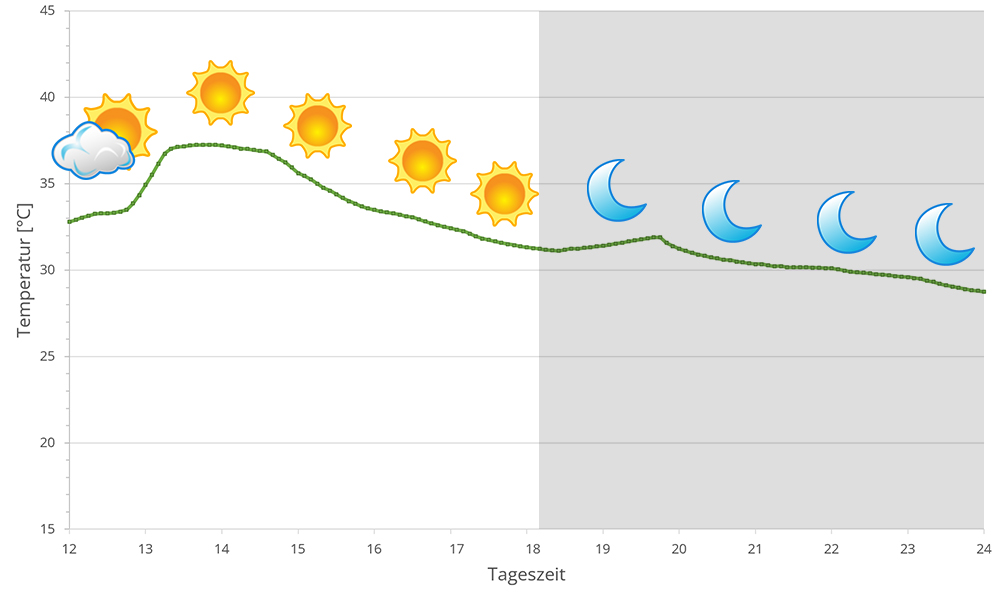
Climate in Mahavelona is warm all year long due to the coastal location. During rainy season from October to April, temperatures raise regularly above 30°C in sunny places, nights do not drop below 21°C. Humidity is high and it rains every other day.
Dry season has little lower temperatures with night drops to 15°C at lowest. It rains much less, you have to expect rain showers only every couple of days. Mahavelona is a holiday region für many Madagascans from the highlands, because climate is warm and the sea is close. 2023 we measured relative humidity with data loggers on one day in Mahavelona in the rainy season, the data can be found below.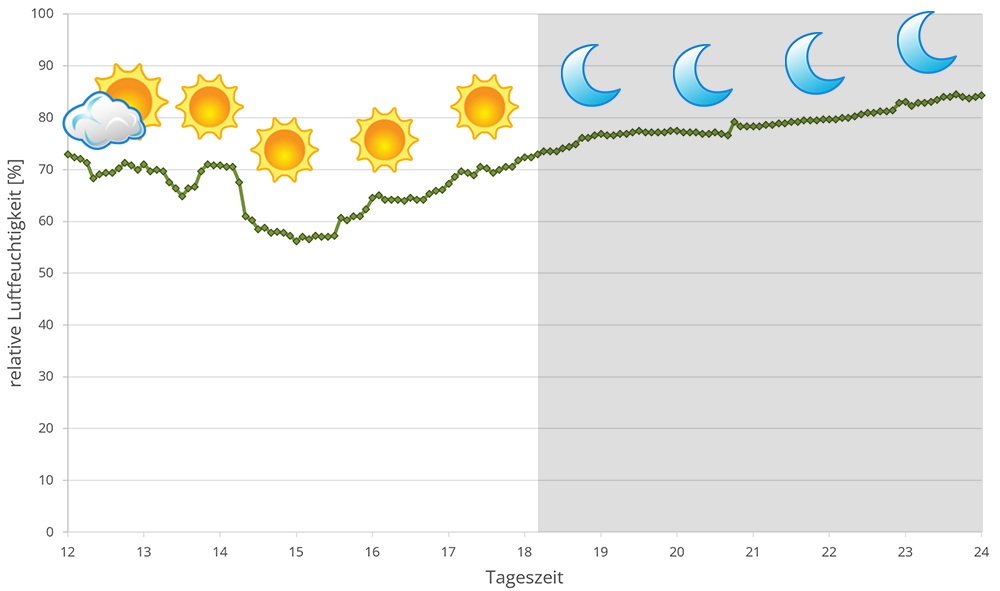
In 2023, in addition to other climate data, we also measured the air pressure at the places we visited in Madagascar. The following data is from a day during the rainy season in Mahavelona. The X-axis shows the time of day or night. In Madagascar, the day begins around 6 am, and night falls at 6 pm. The Y-axis shows the atmospheric pressure in hPa.
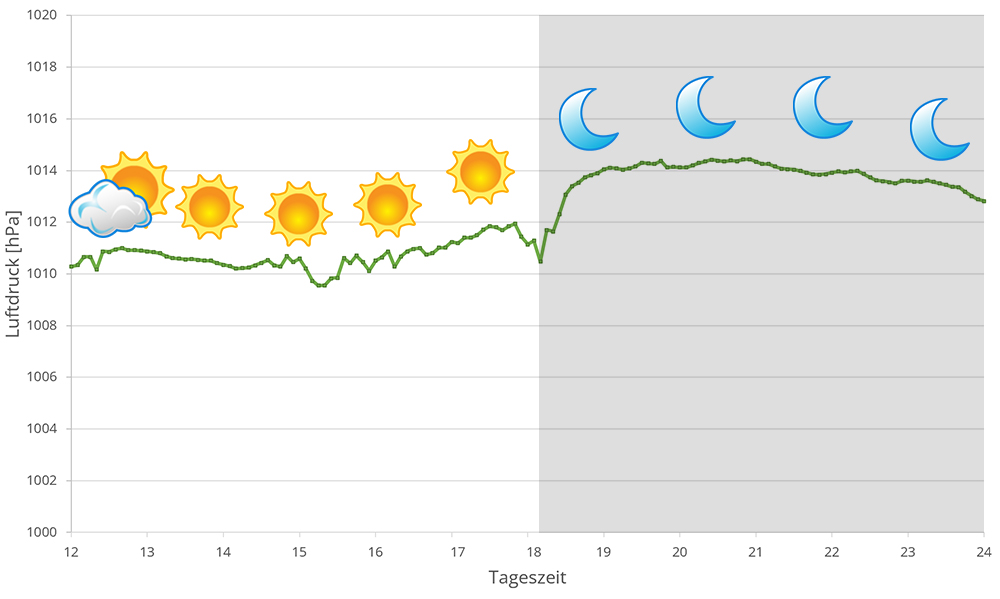
Habitat:
Panther chameleons of this local form can be found at the edges of the roads and on open terrain around Mahavelona. Their habitat consists of huge bushes and large trees. The ground in between is rather wild and high grass is growing on the ground.

